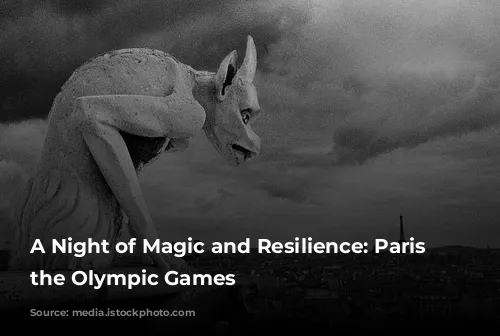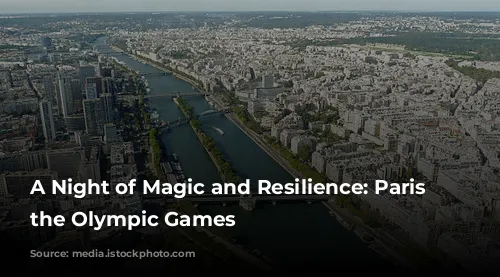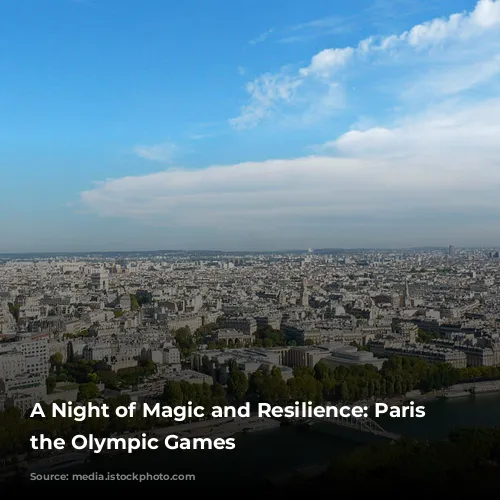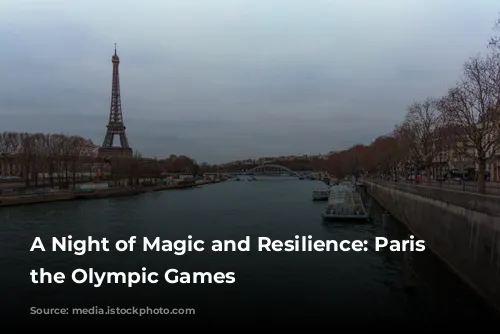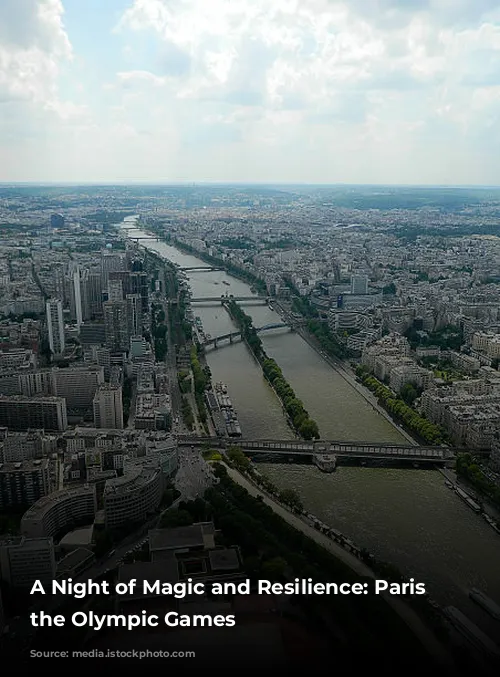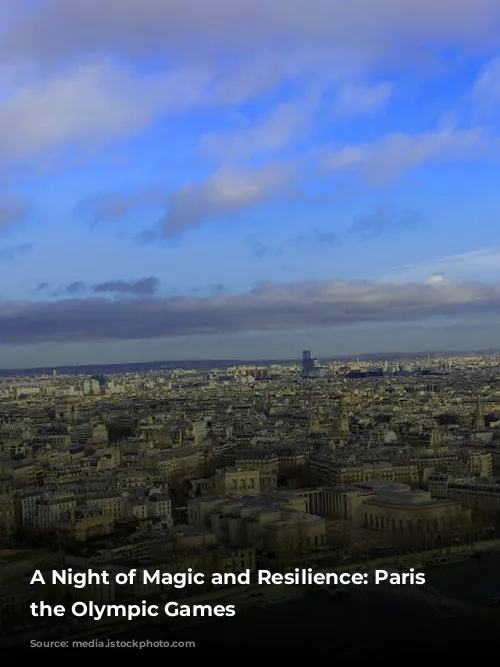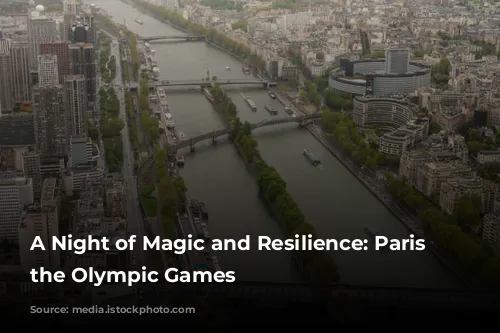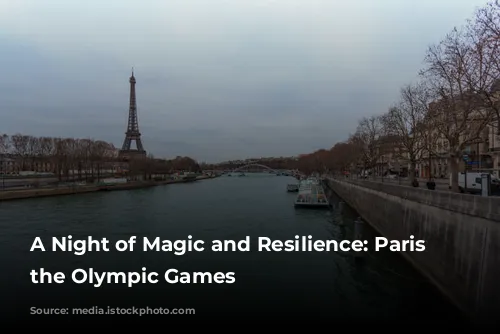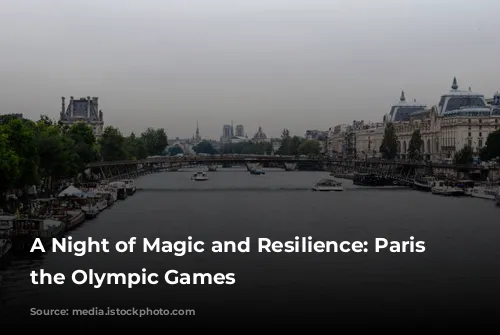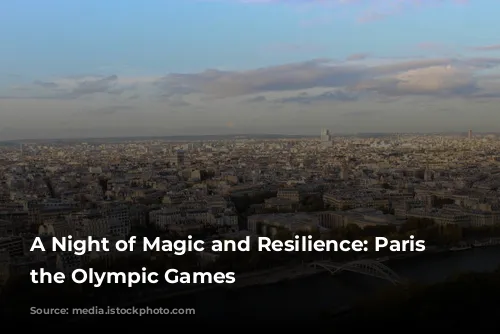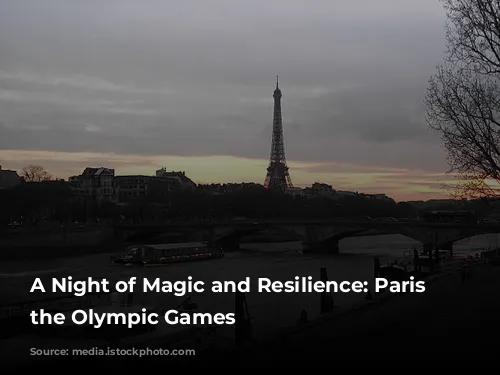A showery Parisian night did little to dampen the spirits of the athletes as they embarked on a spectacular journey down the Seine River. Despite the uncertain weather, the ceremony reflected the city’s indomitable spirit—a stark contrast to the recent investigation of suspected acts of sabotage targeting France’s high-speed rail network.
The stakes were high for France, with dozens of world leaders in attendance and global eyes fixed on the grand spectacle. The Seine transformed into an open-air theatre, showcasing iconic monuments like the Louvre, which served as the stage for the Olympic cauldron lighting ceremony. The cauldron, attached to a giant balloon, soared into the night sky—a nod to the pioneering spirit of early French aviators.
The athletes’ enthusiasm was contagious. “We survived the rain, but it didn’t spoil any of our fun,” exclaimed Kelly Cheng, a USA beach volleyball player. “This was one of the most magical nights of our lives.” Crowds lined the banks of the Seine, captivated by the parade of boats and performances. The rain intensified, sending many spectators seeking shelter under umbrellas, but others danced and sang, their joy undeterred.
LeBron James, the US basketball star, echoed the spirit of resilience. “The rain can’t stop us,” he said, sporting a plastic poncho alongside his fellow flag bearer, tennis player Coco Gauff. The weather presented unique challenges, forcing organizers to modify certain elements of the show. A pianist bravely played on despite puddles forming on his grand piano, while a breakdancer flipped and twirled on a rain-soaked platform. The Parisian spirit prevailed, transforming the unexpected into a captivating spectacle.
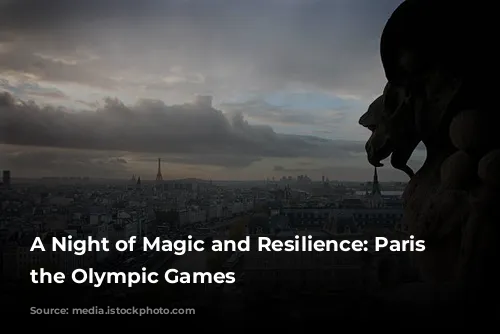
A Tapestry of French Culture and Heritage
The opening ceremony was a vibrant celebration of France’s rich cultural heritage. From the humorous short film featuring soccer legend Zinedine Zidane to the powerful rendition of “Djadja” by French-Malian pop star Aya Nakamura, the show showcased the nation’s diverse artistic tapestry. Lady Gaga, with a touch of French flair, added a cabaret twist to the evening. And in a heartwarming moment, Dion, a French-Canadian singer, delivered her first live performance since being diagnosed with stiff person syndrome, bringing the audience to their feet.
The ceremony also paid tribute to pioneering women. Ten golden statues, including one of Olympe de Gouges, a prominent feminist and abolitionist, were erected along the river. This was a symbolic representation of Paris’ commitment to gender equality, with the Games aiming to be the first with an equal number of men and women competing.
The opening ceremony was an extravaganza of scale and ambition. The athletes’ parade, comprised of 85 boats carrying thousands of athletes, was a visual spectacle that left a lasting impression. The boats surged through curtains of water cascading down from Austerlitz Bridge, a playful nod to the fountains of Versailles Palace. The ceremony was a powerful statement about France’s resilience, innovation, and commitment to the Olympic spirit.
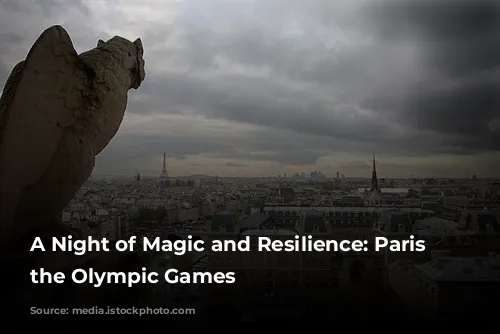
Challenges and Triumphs
The ambitious undertaking was not without its challenges. Despite advice from organizers, some spectators encountered long waits to reach their seats. “Paris has been great, anything to do with the Olympics and dissemination of information has been horrible,” said Tony Gawne, a 54-year-old Texan who had arrived six hours in advance. The logistical complexities of such a grand event posed some hurdles.
But Paris had many aces up its sleeve. Award-winning theater director Thomas Jolly, the show’s visionary director, utilized the city’s iconic landmarks as a stage for his ambitious storytelling. The Eiffel Tower, Notre Dame Cathedral, and the Louvre Museum were transformed into breathtaking backdrops for a show designed to leave an indelible mark on the Olympic audience. The ceremony aimed to revitalize the image of Paris, showcasing the city’s resilience in the face of recent challenges and its commitment to a more sustainable and inclusive future.
Security measures were paramount, with large fenced-off areas and a no-fly zone in place. The athletes’ waterborne adventure took them past historic landmarks, now transformed into Olympic sporting venues. The Games represented a unique opportunity for Paris to showcase its cultural and historical significance, highlighting its dedication to a future filled with both athletic excellence and global unity.
Paris’ chief organizer, Tony Estanguet, articulated the spirit of the Games succinctly. “Our goal is to show to the whole world and to all of the French that in this country, we’re capable of exceptional things.” And with the opening ceremony’s dazzling display of artistry, resilience, and unwavering dedication, Paris certainly made a bold statement about its capabilities and its commitment to an unforgettable Olympic experience.
